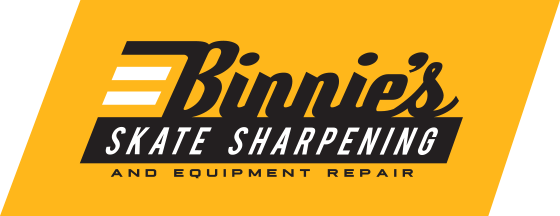Pro's Corner: Radius of Hollow vs. Flat Bottom V
In skate sharpening, there are two types of cuts you can get for your skates: Radius of Hollow (RoH) and Flat Bottom V (FBV).
Radius of Hollow
For Radius of Hollow sharpening, the skate is ground on a wheel that creates a concave groove in the skate. The depth is determined by the relative radius of the wheel to the blade. As was covered in our previous blog, a deeper hollow provides for more grip on the ice. This is created by using a smaller radius on the cutting wheel. Conversely, a shallower hollow gives more glide and retained speed. This is achieved by using a larger radius. The hollow you choose is represented in fractions of an inch, with 1/2” or 5/8” being the standard.
Flat Bottom V
An alternative to the common Radius of Hollow is the Flat Bottom V, developed by Blackstone. In the FBV, the traditional half-moon concave shape is modified so the bottom is flat and the two edges extend more like fangs. In theory, the FBV provides more grip without sacrificing as much glide by affecting the relative friction coefficient.
In a FBV cut, the grip vs glide factor is influenced by not only the depth but the angle of the “teeth” creating each edge. This is defined by a two number system where the first number is the width of the flat portion of the blade and the second is the height from the top of a given edge to the flat portion. 100/50 and 90/1 are the most common FBV cuts and are comparable to 1/2” and 5/8” respectively.
What is right for me?
There is no right answer when it comes to choosing which type of sharpening is best for you. The best way to determine the right sharpening for you and your game is through trial and consulting with a professional skate sharpening shop, like Binnie’s.
Ready to get a fresh cut on your skates? Binnie’s offers drop-off and mail-in sharpening services.


